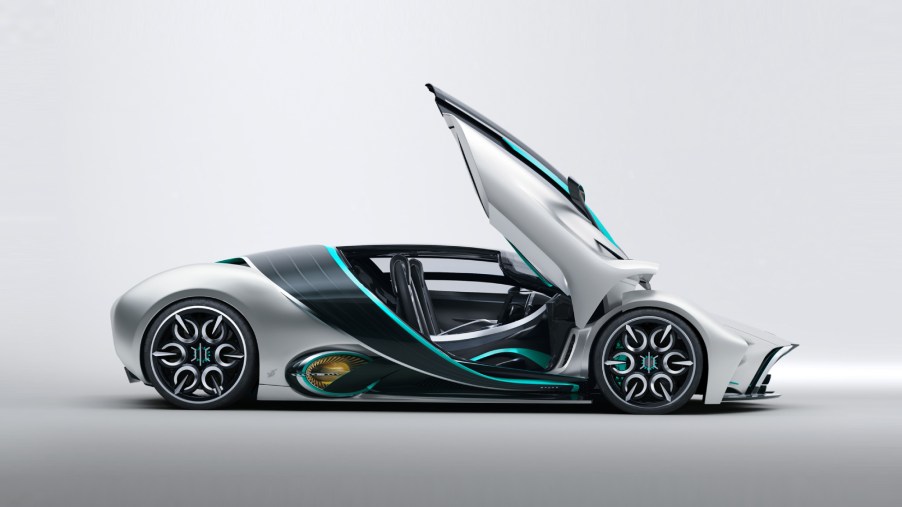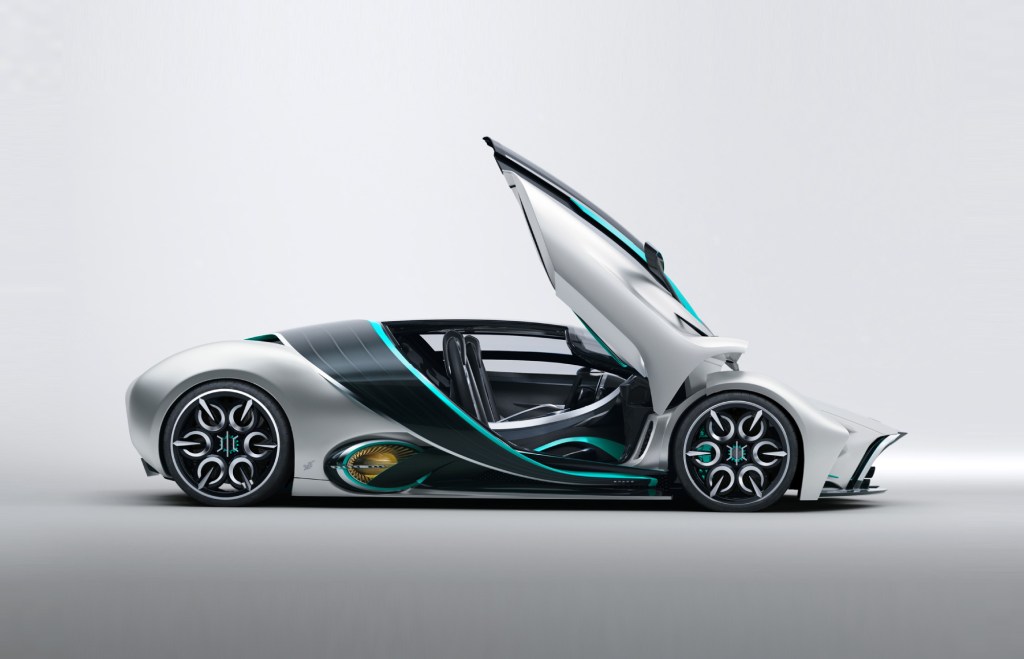
Hyperion XP-1 Hydrogen-Powered EV Supercar Has a 1,000-Mile Range
You might have never heard of the Hyperion brand before, mainly because it sounds like something out of the future. Well, the Hyperion XP-1 is a hydrogen-powered electric vehicle supercar from the future. What specs does this space-age supercar have, and will hydrogen power ever be a viable fuel source?
Is the Hyperion XP-1 real?

According to Robb Report, the Hyperion XP-1 is currently a prototype. However, it has a lot of science behind the brand. Hyperion works with NASA to bring space-travel technology to commercial applications, like the XP-1. A team of PhDs founded the brand to focus on hydrogen as a power source. While hydrogen-based power hasn’t exactly taken off yet, Hyperion thinks it is about to. The 24 Hours of Le Mans is apparently adding a hydrogen class by 2024, which would be a huge move.
Hyperion hopes to start delivering the Hyperion XP-1 to buyers in early 2022. Hyperion will make only about 300 Hyperion XP-1 supercars, but no pricing is out yet. Angelo Kafantaris, Hyperion’s CEO, said, “With the XP-1, we’ll be inspiring first and then explaining how we’ll bring hydrogen mainstream.”
How does the Hyperion XP-1 work?
Hyperion XP-1 works with hydrogen fuel-cell technology. Hyperion claims the XP-1 has a range of 1,000 miles and a recharge time of three to five minutes. The brand also says the Hyperion XP-1 has a 0-60 time of 2.2 seconds and a top speed of 220 mph.
The Hyperion Hydrogen Propulsion System “uses advanced space flight technology to store more hydrogen in less volume than any other vehicles on the road today.” Hydrogen allows the supercar to release more electrical power after a chemical reaction breaks the molecules apart. “We can store more energy, for the weight, than a battery-electric vehicle,” Kafantaris told Robb Report.
The XP-1 uses a lightweight monocoque made of titanium-reinforced carbon fiber. This aids in the ability to go quick, accelerate faster, and be more efficient. The XP-1 even has a wing that provides solar energy and ample downforce at the same time. The hydrogen storage system isn’t impacted by high temperatures, either. That means it doesn’t need to cool down after prolonged use.
Will this supercar ever come to fruition?
People have reported seeing the Hyperion supercar on the streets in the last few months. The XP-1 was seen in California back in February, driving around in a camouflaged wrap. One of the most significant issues with hydrogen power is the lack of affordable hydrogen fueling stations. California has some, and Canada appears to have three. That seems to be it for now.
However, just like the electric vehicle charging network is expanding right now, hydrogen can too. The team at Hyperion has been working on the vehicle for almost a decade, and it will hit the market in 2022. Unless you live by a hydrogen station, it likely won’t be something you see on the road regularly. There are a lot of issues with hydrogen power but Hyperion is working on it.
Keep your eyes open for more news about the Hyperion XP-1 as 2022 approaches. And if you live in California, you might get lucky enough to see one roaming the streets.



